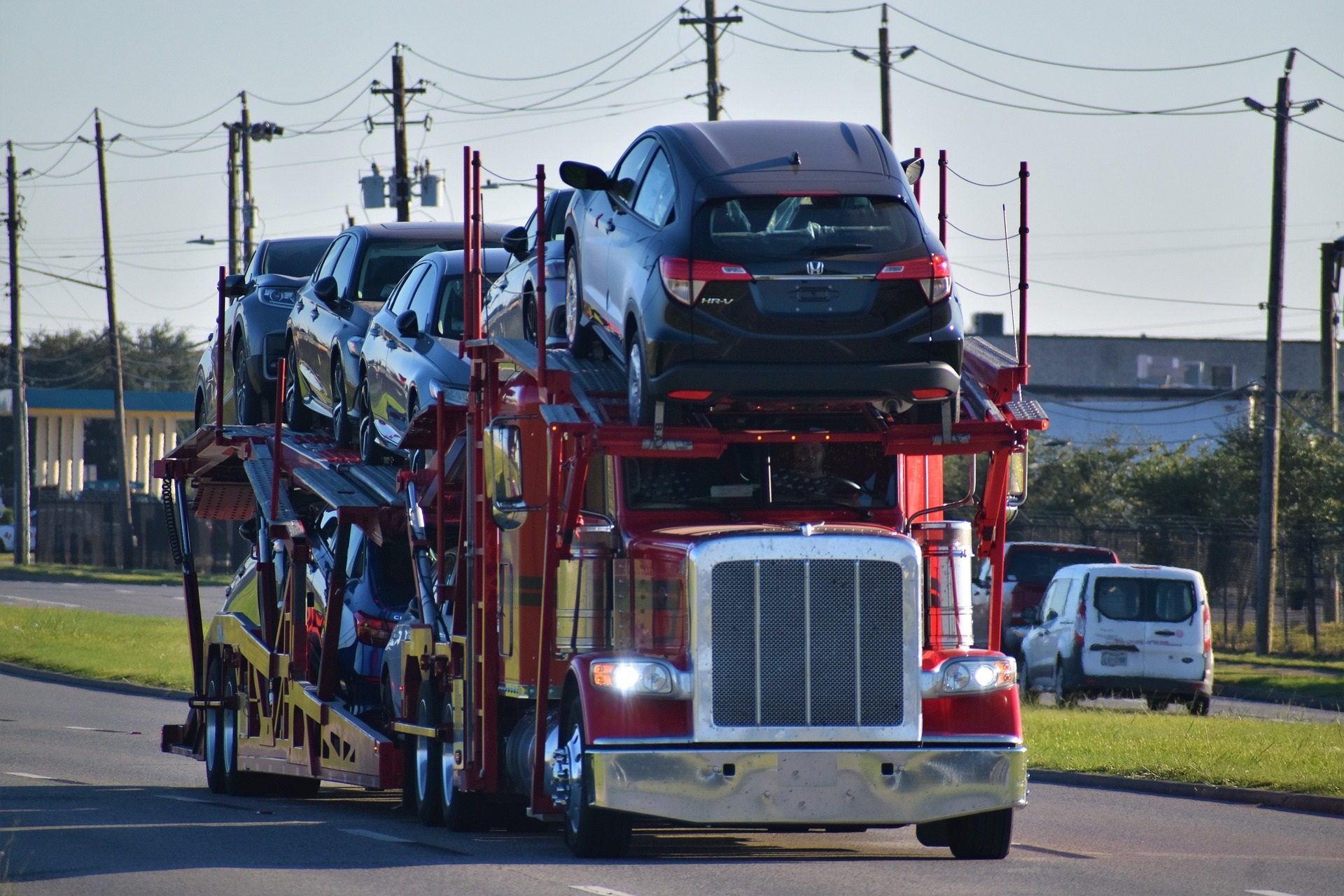Towing a car with another car over a long distance presents a unique set of challenges that demand careful planning and execution. Whether you find yourself needing to transport a vehicle for relocation purposes or have encountered a breakdown on the road, understanding the proper techniques is crucial to ensure a safe and efficient towing experience. In this article, we will explore the step-by-step process of how to tow a car with another car over a long distance, while highlighting important considerations and potential pitfalls along the way.

This image is property of sgtautotransport.com.
Preparation
Before setting out on a long-distance towing journey, it is crucial to ensure that you are properly prepared. This involves a number of important steps that will help to ensure a safe and successful towing experience.
Check the towing capacity of your vehicle
The first step in preparing for long-distance towing is to check the towing capacity of your vehicle. This information can typically be found in your vehicle’s owner’s manual or by consulting the manufacturer’s specifications. It is vital to understand the maximum weight that your vehicle can safely tow, as exceeding this limit can put unnecessary strain on your vehicle’s engine, transmission, and brakes.
Inspect the towing equipment
Inspecting the towing equipment is another essential aspect of preparation for long-distance towing. This includes checking the condition of the tow bar, safety chains, and wiring harness. Look for any signs of wear or damage, such as rusted or weak components, and make any necessary repairs or replacements before embarking on your journey. Ensuring that your towing equipment is in top-notch condition will enhance the safety and reliability of your tow.
Ensure proper tire inflation
Proper tire inflation is crucial when towing a vehicle over long distances. Before setting off, thoroughly inspect the tires on both your towing vehicle and the vehicle being towed. Ensure that they are properly inflated according to the manufacturer’s recommendations. This will help to maintain stability and control while on the road, reducing the risk of blowouts or tire damage.
Secure loose items in the vehicle
Before hitting the road, take the time to secure any loose items inside the towing vehicle. These items can become dangerous projectiles in the event of sudden braking or a collision. Secure any loose objects in the trunk, cargo area, or back seat to prevent them from causing damage or injury during your journey.
Check vehicle fluids
Before embarking on a long-distance towing trip, it is essential to check and top up all vital fluids in both the towing vehicle and the vehicle being towed. This includes engine oil, coolant, transmission fluid, and brake fluid. Proper fluid levels and quality will help to ensure optimal performance and reduce the risk of mechanical issues during your journey. Make a thorough inspection and address any required maintenance or repairs before you start towing.
Choosing the Right Tow Bar
Selecting the appropriate tow bar is a critical step in ensuring a safe and effective long-distance towing experience. Understanding the different types of tow bars, considering the weight and size of the towed vehicle, and determining the compatible tow bar for your vehicle are all important factors to consider.
Understand the different types of tow bars
There are several different types of tow bars available, each with its own advantages and considerations. The most common types include A-frame tow bars, self-aligning tow bars, and rigid tow bars. A-frame tow bars are popular due to their simplicity and versatility, while self-aligning tow bars provide ease of use and convenience. Rigid tow bars, on the other hand, offer a more secure and stable connection between the towing and towed vehicles. Understanding the pros and cons of each type will help you make an informed decision based on your specific needs and preferences.
Consider the weight and size of the towed vehicle
When choosing a tow bar, it is essential to consider the weight and size of the vehicle you will be towing. Different tow bars have different weight capacities, and exceeding these limits can put excessive strain on both vehicles, compromising safety. Be sure to know the weight and dimensions of the towed vehicle and choose a tow bar that can handle its load.
Determine the compatible tow bar for your vehicle
Not all tow bars are compatible with every vehicle. It is crucial to determine which tow bar is compatible with your towing vehicle. Consider the manufacturer’s specifications and recommendations to ensure a proper fit and secure attachment. Failing to use the correct tow bar for your vehicle can result in a dangerous and unstable towing situation.
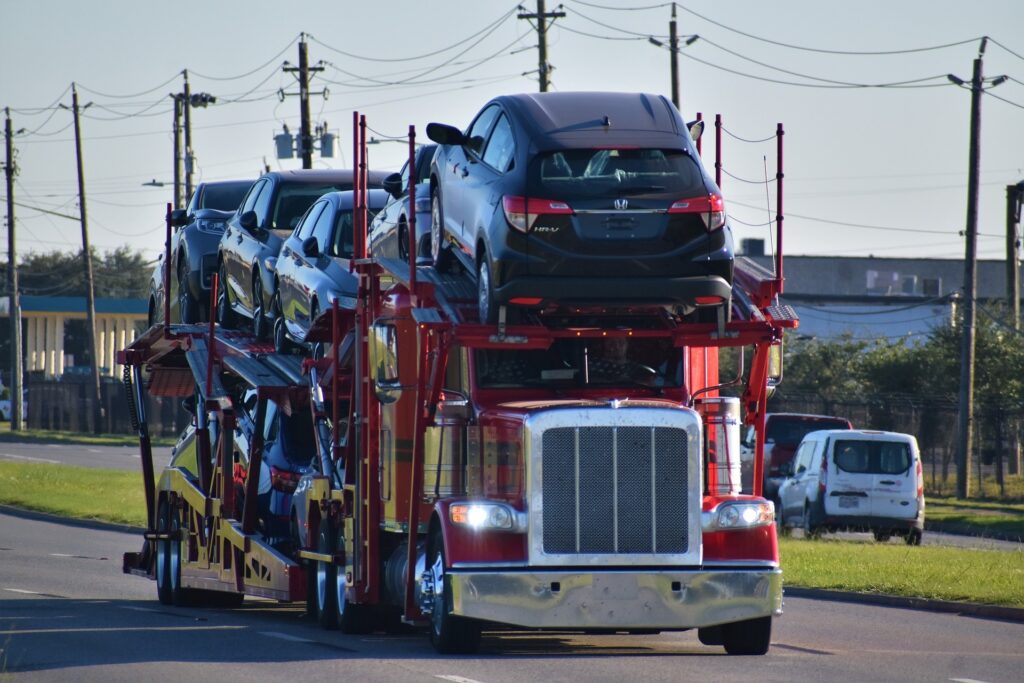
This image is property of www.shipaa.com.
Attaching the Tow Bar
Once you have selected the appropriate tow bar for your towing needs, it is time to attach it to both vehicles. Properly attaching the tow bar is essential for the safe and secure transportation of the towed vehicle.
Position the towed vehicle behind the towing vehicle
To begin the attachment process, position the towed vehicle directly behind the towing vehicle, aligning them in a straight line. Leave enough space between the vehicles to allow for turns and maneuvers during your journey. It is essential to maintain a clear line of sight between the two vehicles at all times.
Align the tow bar and attach it to both vehicles
Once the vehicles are properly positioned, align the tow bar with the towing vehicle’s hitch receiver. Lower the tow bar onto the receiver and ensure that it is centered and level. Insert the hitch pin or locking mechanism, depending on the type of tow bar being used, to securely attach the tow bar to the towing vehicle.
Next, attach the tow bar coupler to the front of the towed vehicle. Use the appropriate hardware and fasteners provided with the tow bar to ensure a secure connection. Double-check all attachments to verify that they are tightened and properly secured before proceeding.
Secure the tow bar with safety pins or locks
To further enhance the safety and stability of the towed vehicle, secure the tow bar with safety pins or locks. These additional precautions provide an added layer of protection against accidental disconnection or detachment during your journey. Ensure that all safety pins or locks are securely in place and double-check them before setting off.
Connecting Safety Chains
Safety chains are an integral part of the towing setup and play a vital role in ensuring the safety and security of both vehicles during transport.
Cross the safety chains underneath the tow bar
To properly connect the safety chains, start by crossing them underneath the tow bar. This creates an additional level of support to prevent the towed vehicle from completely detaching in the event of a hitch failure or disconnection.
Attach the chains to the towing vehicle
Once the chains are crossed underneath the tow bar, attach each chain to the designated anchor points on the towing vehicle. These anchor points are typically located near the hitch receiver or another designated location specified by the manufacturer. Properly attach the chains using the provided hooks or fasteners, ensuring that they are securely in place.
Make sure the chains are securely fastened
After attaching the chains to the towing vehicle, make sure they are properly fastened and securely tightened. The chains should be taut but allow for flexibility and movement during turns or maneuvers. Avoid leaving excessive slack in the chains, as this can lead to dangerous swaying or instability while on the road.
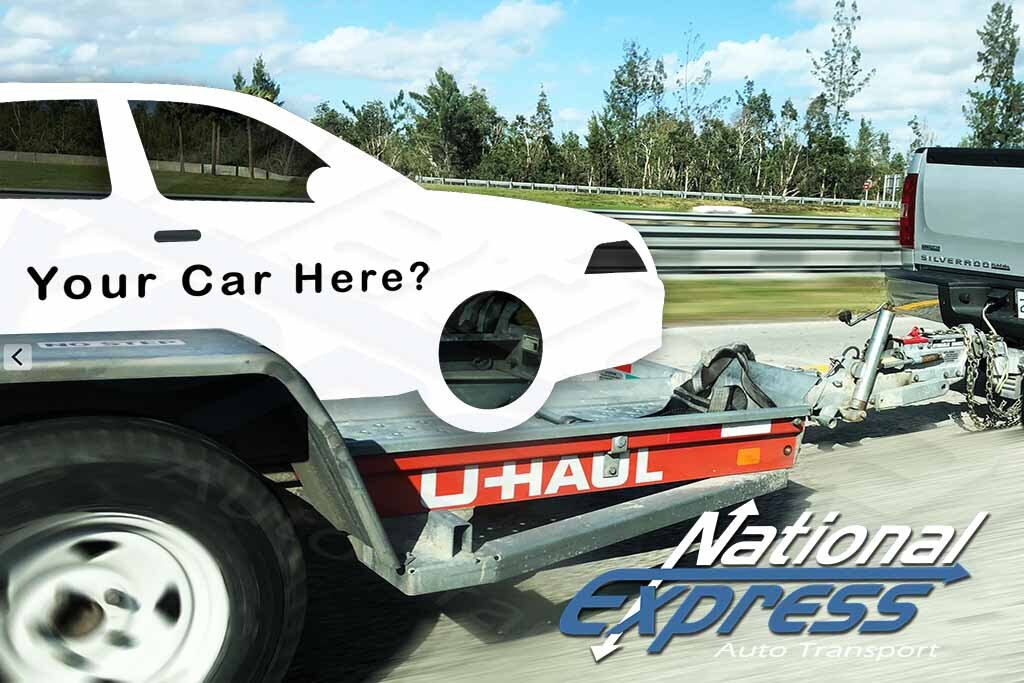
This image is property of nxautotransport.com.
Hooking Up the Lights
Properly functioning lights are essential for communicating your intentions to other drivers on the road. When towing a vehicle, it is crucial to ensure that the lights of both vehicles are connected and working correctly.
Attach the wiring harness of the towed vehicle to the towing vehicle
Begin by attaching the wiring harness of the towed vehicle to the appropriate connection point on the towing vehicle. This connection point is typically located near the hitch receiver and is specifically designed for trailer or towing connections. Follow the manufacturer’s instructions for properly connecting the wiring harness and ensure that it is securely attached.
Test the lights to ensure proper functionality
After connecting the wiring harness, it is crucial to test the lights to ensure that they are functioning properly. Have someone assist you by checking each light and signal to verify that they are working as expected. This includes the headlights, taillights, brake lights, turn signals, and reverse lights. Properly functioning lights are vital for maintaining visibility and ensuring the safety of both your vehicle and others on the road.
Checking Brakes and Steering
Before embarking on your long-distance towing journey, it is essential to verify that the towed vehicle’s brakes and steering are in the proper position for safe transportation.
Verify that the towed vehicle’s brakes and steering are not engaged
Before towing, ensure that the towed vehicle’s brakes are disengaged. This can usually be achieved by ensuring that the parking brake is released or that the transmission is in neutral. Engaging the brakes of the towed vehicle while being towed can cause excessive strain on the towing vehicle and compromise the overall safety and control of the towing setup.
Additionally, check that the towed vehicle’s steering is not locked. Locked steering can make it challenging to control the towed vehicle and can lead to instability and unsafe conditions while on the road.
Ensure the towed vehicle is in neutral gear
To minimize strain on the towing vehicle and ensure smooth transportation, verify that the towed vehicle is in neutral gear. This reduces resistance and allows the vehicle to roll freely while being towed. Double-check the towed vehicle’s manual or manufacturer’s instructions for any specific guidelines regarding towing in neutral gear.
Double-check for any potential hazards
Once you have verified the brakes and steering of the towed vehicle, take a moment to double-check for any potential hazards. Ensure that all windows are securely closed, as well as any doors or compartments. Confirm that any loose items inside the towed vehicle are properly secured or removed. By taking these precautions, you can prevent potential damage or distractions during your long-distance towing journey.
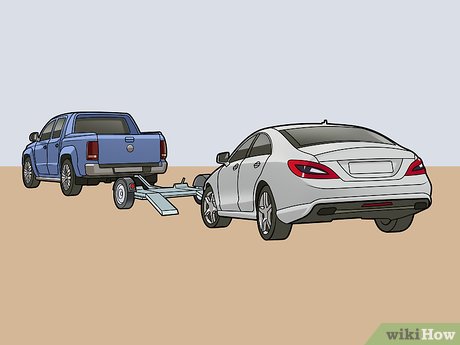
This image is property of www.wikihow.com.
Practice Safety Measures
While towing a car long distance, it is essential to prioritize safety at all times. By following a few key safety measures, you can minimize risks and ensure a safe and enjoyable towing experience.
Maintain a safe driving speed
When towing a vehicle, it is important to adjust your driving speed to accommodate the increased weight and reduced maneuverability. Maintain a safe and controlled speed that allows for predictable handling and sufficient stopping distance. Excessive speed can lead to dangerous situations and compromise your ability to react to unexpected events.
Keep a safe distance from other vehicles
Maintaining a safe distance from other vehicles on the road is crucial when towing long distances. The increased weight and reduced braking capabilities of the towing setup require additional time and distance to come to a complete stop. Allow for a larger cushion between your vehicle and the vehicle in front to account for this increased stopping distance.
Use turn signals and lights for communication
Clear communication with other drivers on the road is essential for safe towing. Use your turn signals and lights to indicate your intentions well in advance. This allows other drivers to anticipate your actions and adjust their driving accordingly. Regularly check that all lights are functioning correctly and respond promptly to any signs of malfunction.
Regular Monitoring and Maintenance
To ensure the continued safety and reliability of your towing setup, regular monitoring and maintenance are essential.
Periodically inspect the towed vehicle
Throughout your long-distance towing journey, periodically inspect the towed vehicle for any signs of wear or potential issues. Check for loose components, such as bolts or fasteners, and tighten them as needed. Inspect tires for proper inflation and any signs of damage or excessive wear. Address any concerns promptly to prevent further damage and ensure a safe towing experience.
Check the attachments for any signs of wear or loosening
Regularly check all attachments, including the tow bar, safety chains, and wiring harness, for any signs of wear or loosening. Pay close attention to rusted or weak components and make any necessary repairs or replacements. Properly maintaining these attachments will provide peace of mind and enhance the overall safety and stability of your towing setup.
Monitor vehicle temperature and engine performance
During your long-distance towing journey, keep a close eye on the temperature gauge and engine performance of your towing vehicle. Excessive heat buildup can indicate potential mechanical issues, such as inadequate cooling or transmission problems. If you notice any abnormalities, pull over safely and address the issue before continuing your journey. Regularly monitoring these factors will help to prevent serious damage and ensure a smooth towing experience.
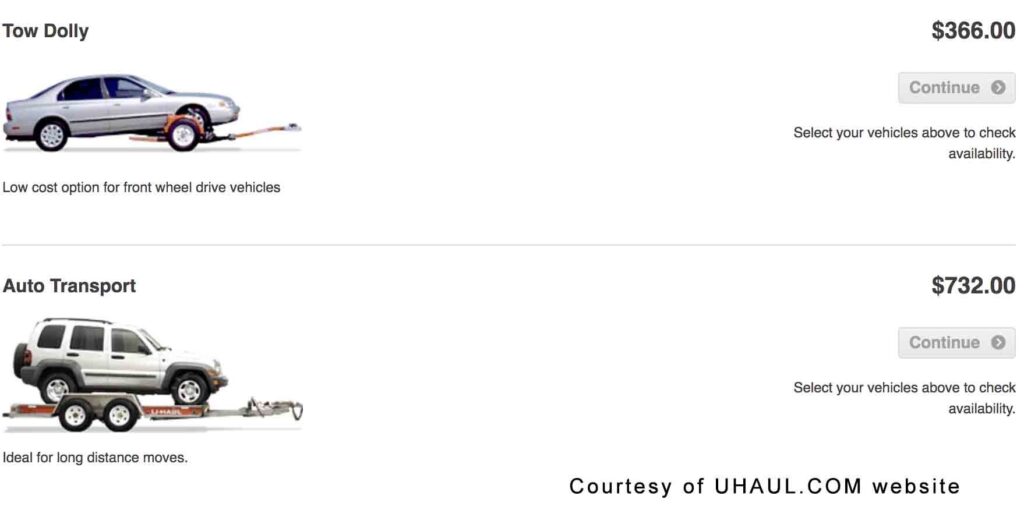
This image is property of nxautotransport.com.
Plan for Rest Stops
Long-distance towing can be physically and mentally demanding. Planning for rest stops along your journey is essential to maintain your well-being and ensure a safe towing experience.
Take breaks every few hours to rest and stretch
Driving for long periods without breaks can lead to fatigue and decreased alertness. Plan for regular rest stops every few hours to give yourself and any passengers an opportunity to rest and stretch. Use these breaks to rehydrate, have a snack, and rejuvenate before continuing your journey. Taking care of yourself will contribute to a safer and more enjoyable long-distance towing experience.
Ensure the towed vehicle is parked in a secure location
When taking rest stops, it is important to ensure that the towed vehicle is parked in a secure location. Choose well-lit and highly visible areas, such as designated parking spaces or rest areas, to minimize the risk of theft or damage. Check that the towed vehicle is securely parked and apply the parking brake for added security.
Inspect the towing equipment during breaks
While on your rest stops, take the opportunity to visually inspect the towing equipment for any signs of wear or damage. Look for loose components, worn-out parts, or any other abnormalities. Address any concerns promptly to maintain the safety and reliability of your towing setup. Regular inspections during breaks will also give you peace of mind and minimize the chances of encountering issues while on the road.
Emergency Situations
Despite careful preparation and planning, there is always a possibility of encountering an emergency situation during long-distance towing. Being prepared for these situations will help to minimize risks and ensure a swift resolution.
Be prepared for potential emergencies
Carry an emergency kit that includes essential tools and equipment for minor repairs. Items such as a spare tire, tire jack and lug wrench, jumper cables, and a basic toolkit can come in handy if you experience a roadside emergency. Additionally, consider having a first aid kit, flashlight, and emergency contact numbers readily accessible.
Carry necessary tools and equipment for minor repairs
In the event of a minor mechanical issue, it is helpful to have the necessary tools and equipment to perform minor repairs. However, it is important to remember that certain repairs may require professional assistance. Always prioritize safety and consult a qualified mechanic or towing service if the situation requires expertise beyond your own abilities.
Have contact information for roadside assistance or towing services
No matter how prepared you are, there may come a time when you require professional assistance. Keep a list of reliable roadside assistance or towing services at hand, including their contact information. This will allow you to quickly and efficiently resolve any emergency situation that may arise during your long-distance towing journey.
In conclusion, towing a car long distance requires thorough preparation and adherence to safety measures. By following the outlined steps, from preparation and choosing the right tow bar to proper attachment, monitoring, and emergency preparedness, you can ensure a safe and successful towing experience. Prioritizing safety, adhering to manufacturer recommendations, and regular maintenance will contribute to a smooth and enjoyable journey while protecting the well-being of both you and others on the road.
